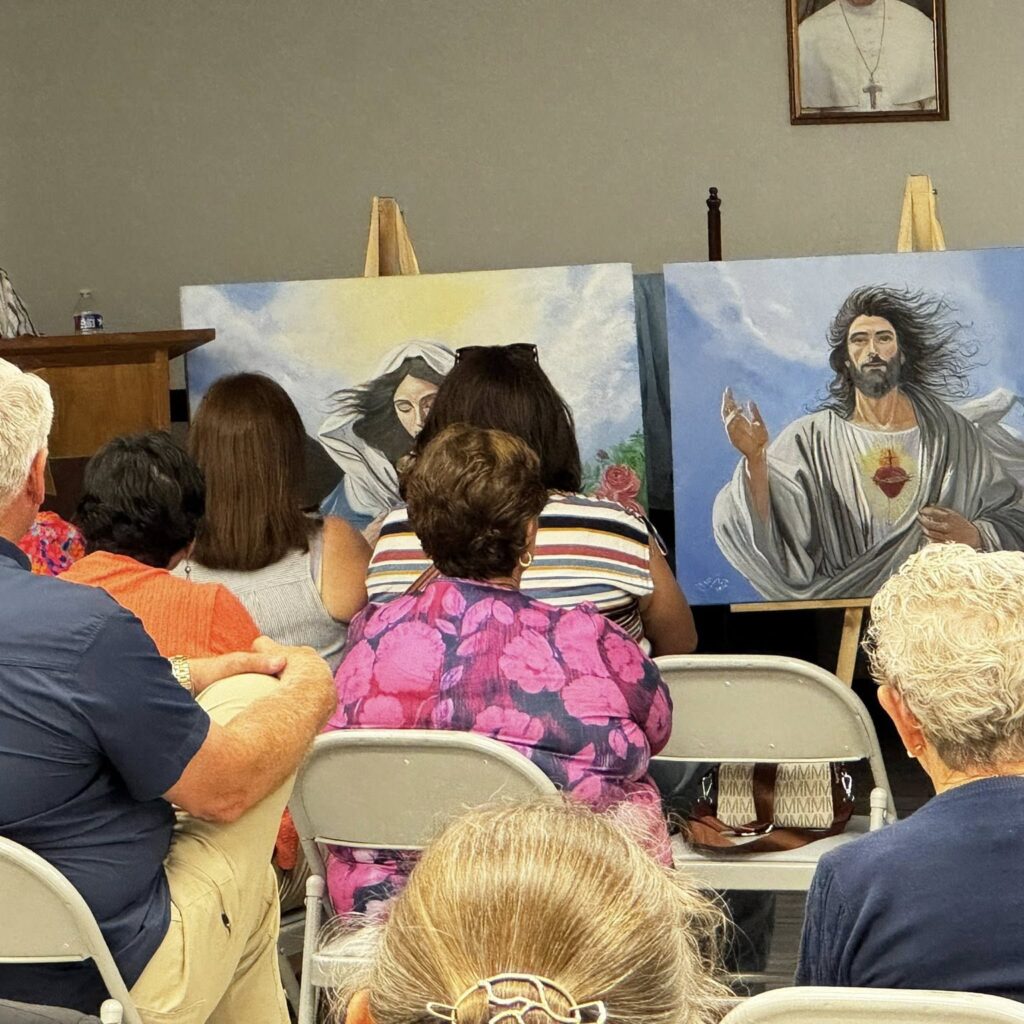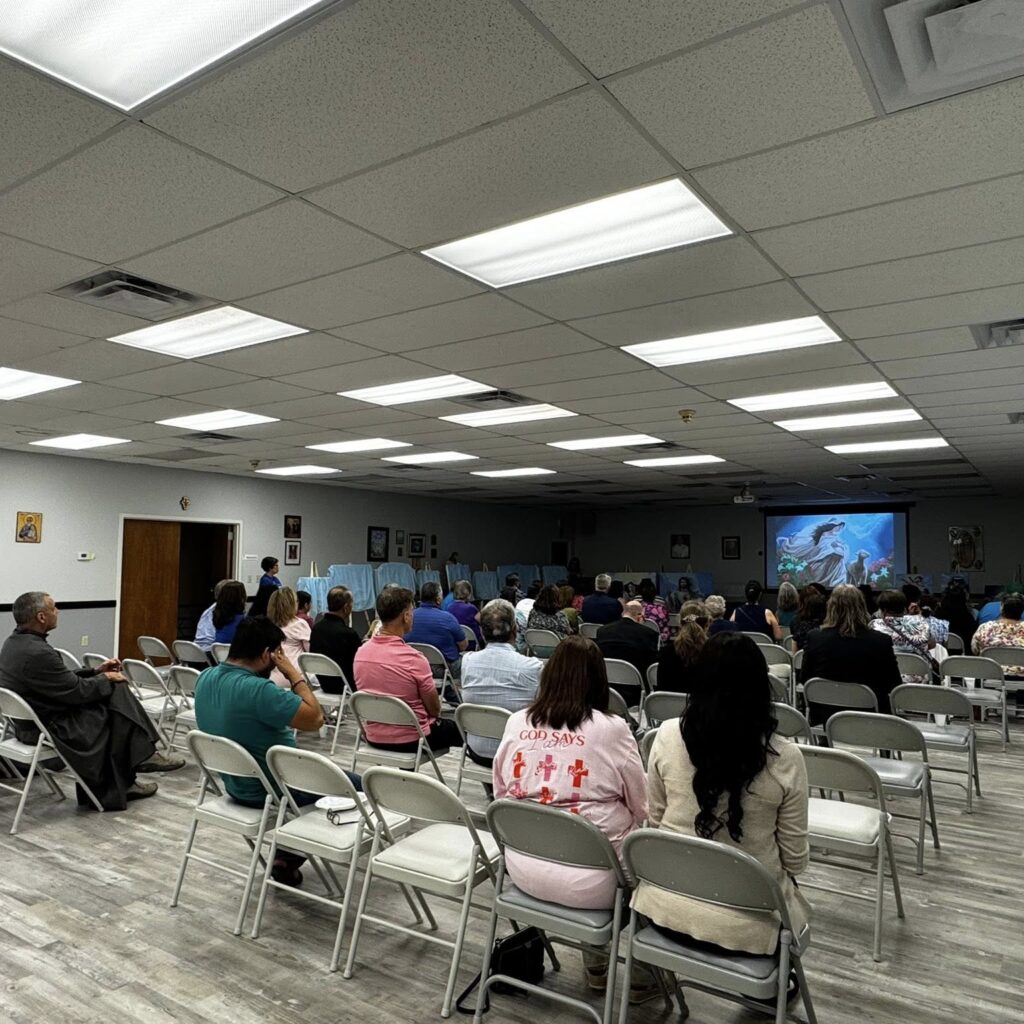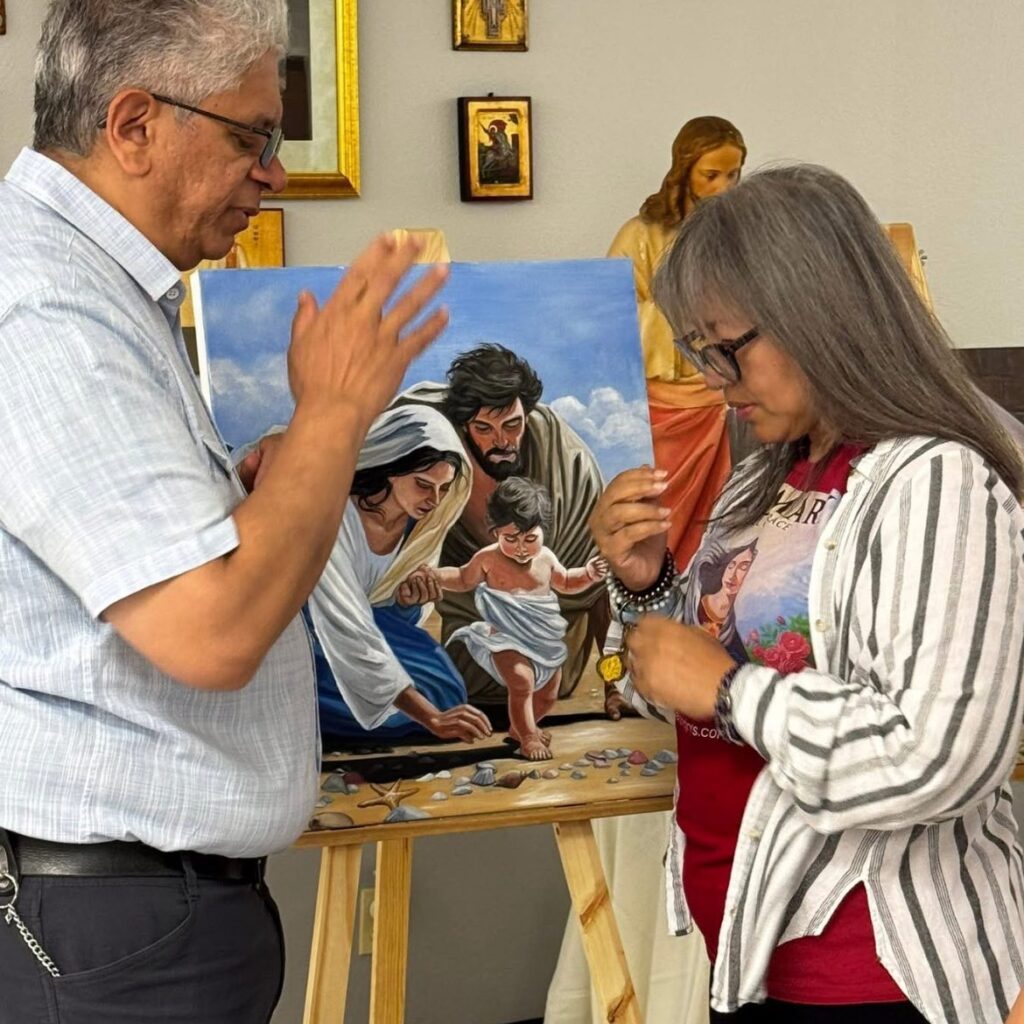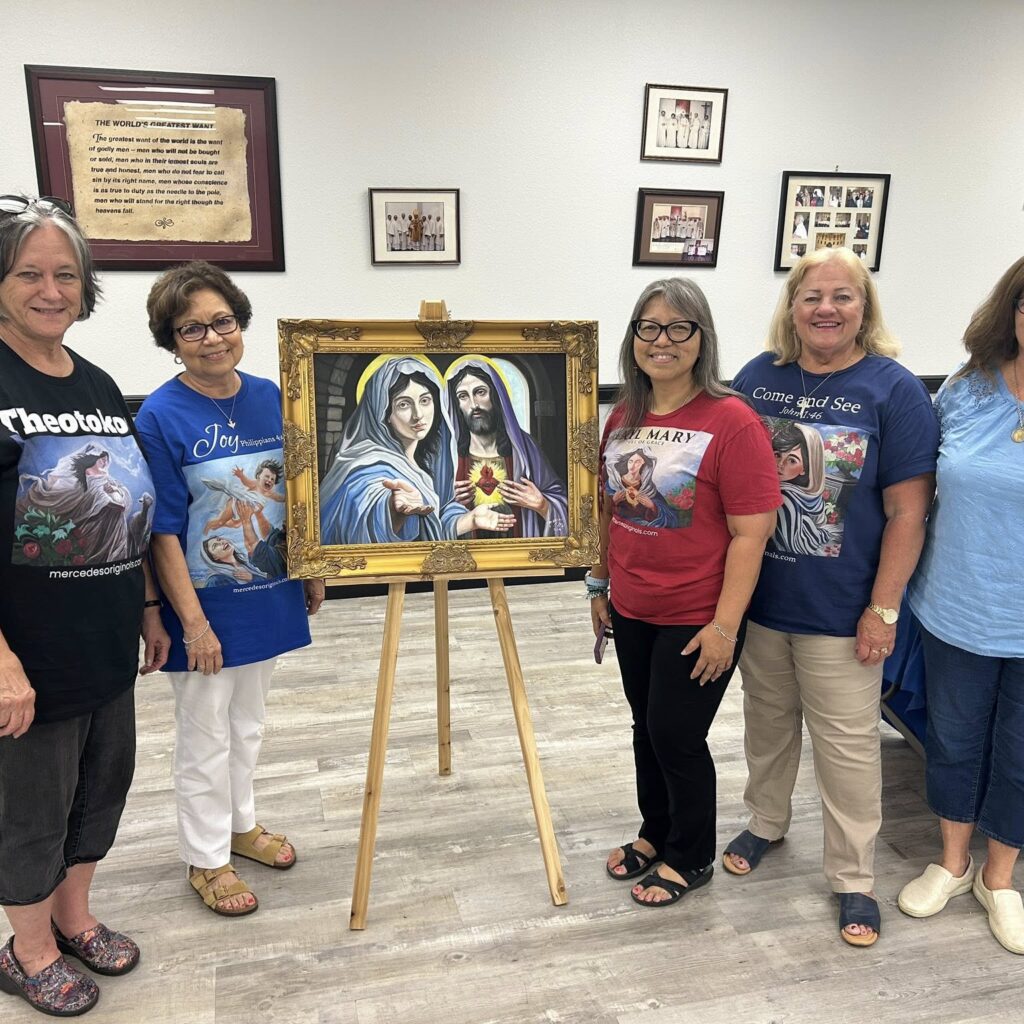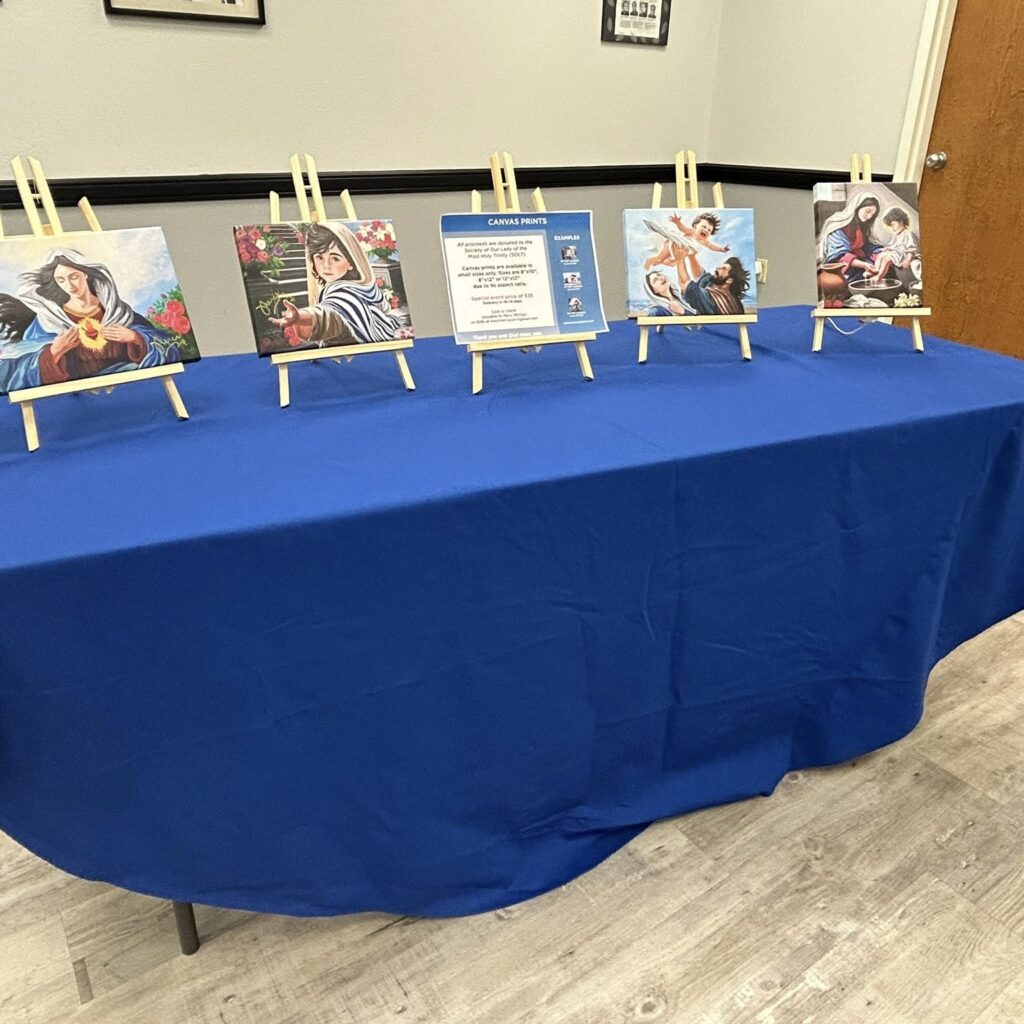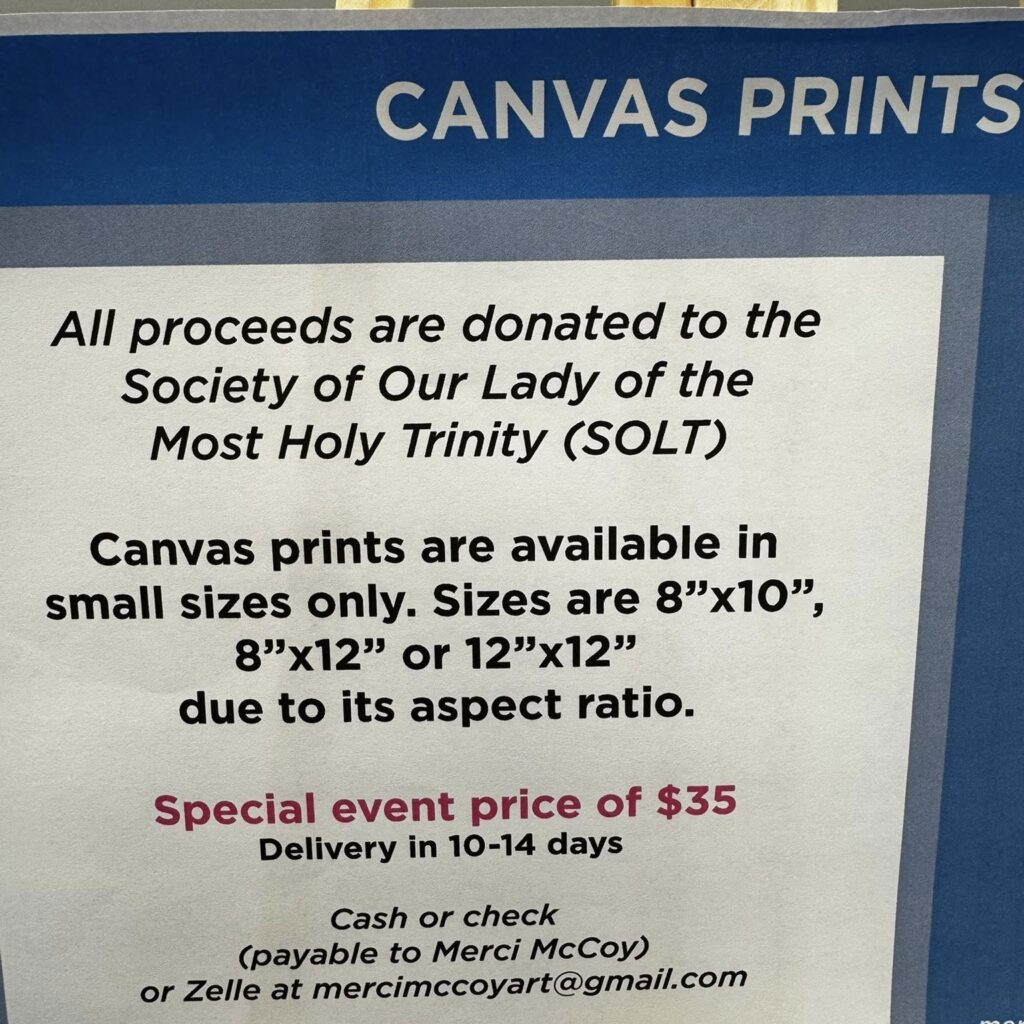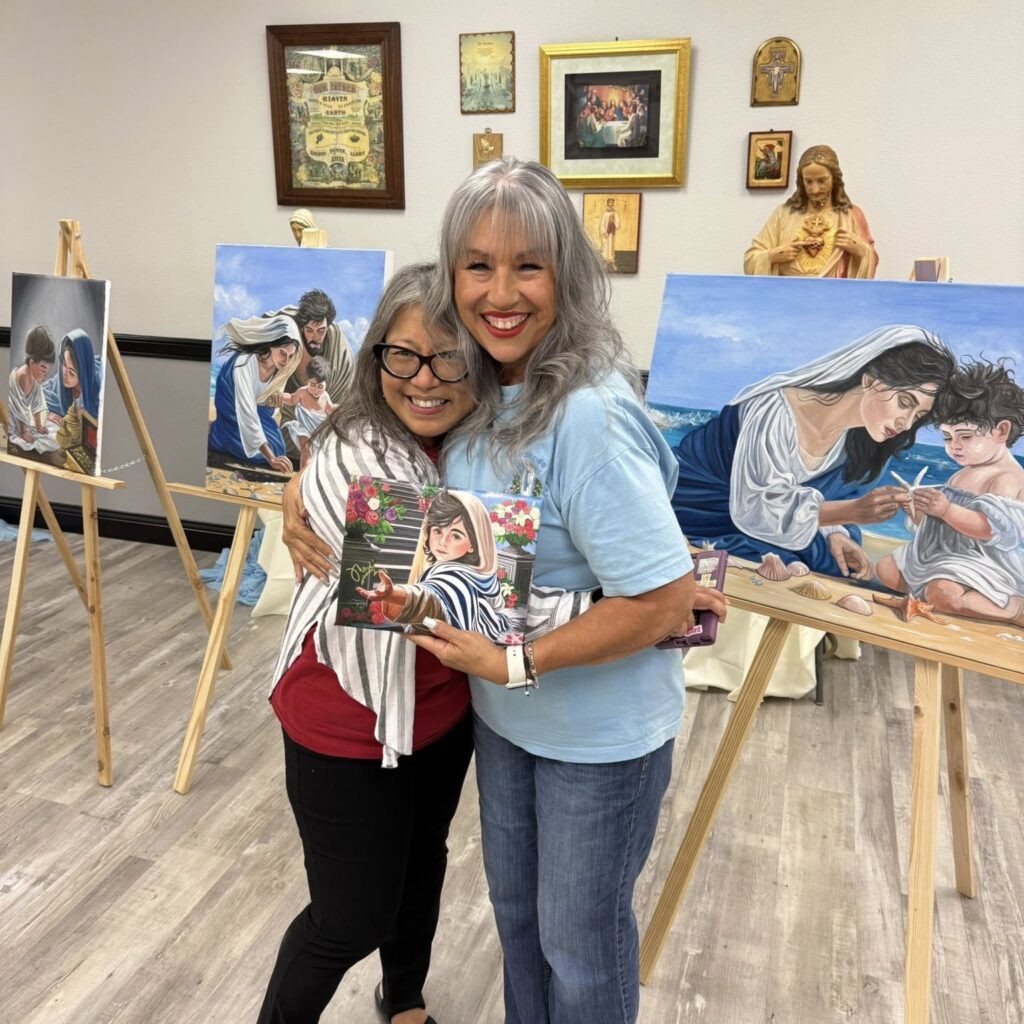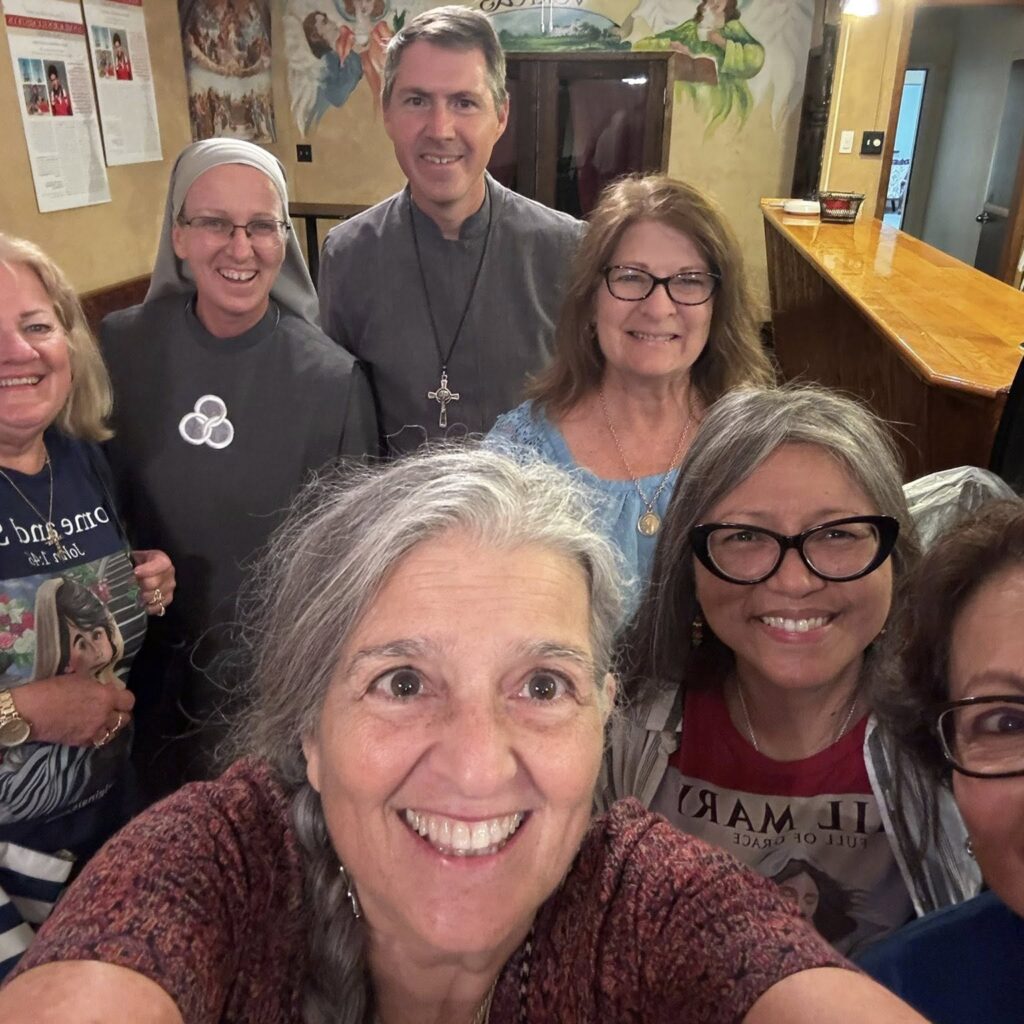It was a grace-filled evening full of providential moments at Our Lady of Corpus Christi on the Feast of Our Lady of Fatima. I am so grateful and profoundly humbled to be able to share the messages of Mother Mary through 31 Holy Spirit inspired paintings. Mother Mary planted seeds in the hearts of all who were there. Praising God for they are already blooming.
I can’t thank you enough to all who made the evening possible. The Lord knows who you are. God will shower you with graces for all that you do. Thank you.
Three of my favorite moments were: first, when Fr. Brady Williams gave the introduction speech and composed a beautiful prayer just for this exhibit. What a blessing! Second, the gifting of 3 original paintings to 3 priest in attendance: Fr. Scott Braathen chose “Child Jesus praying by candlelight (John 17:26)”, Fr. Brady Williams chose “Star of the Sea (Proverbs 31:25-26)” and Fr. Darryl D’Souza chose “Learning to Walk (2 Corinthians 5:7).” And third, the 3 door prizes and when the 3rd number was called out (drawn out of a basket in random) – it went to my beautiful sister-in-Christ, Sandy DeLeon, who felt in her heart that her number would be called because she prayed to baby Jesus. Her prayer was answered. Such a beautiful story.
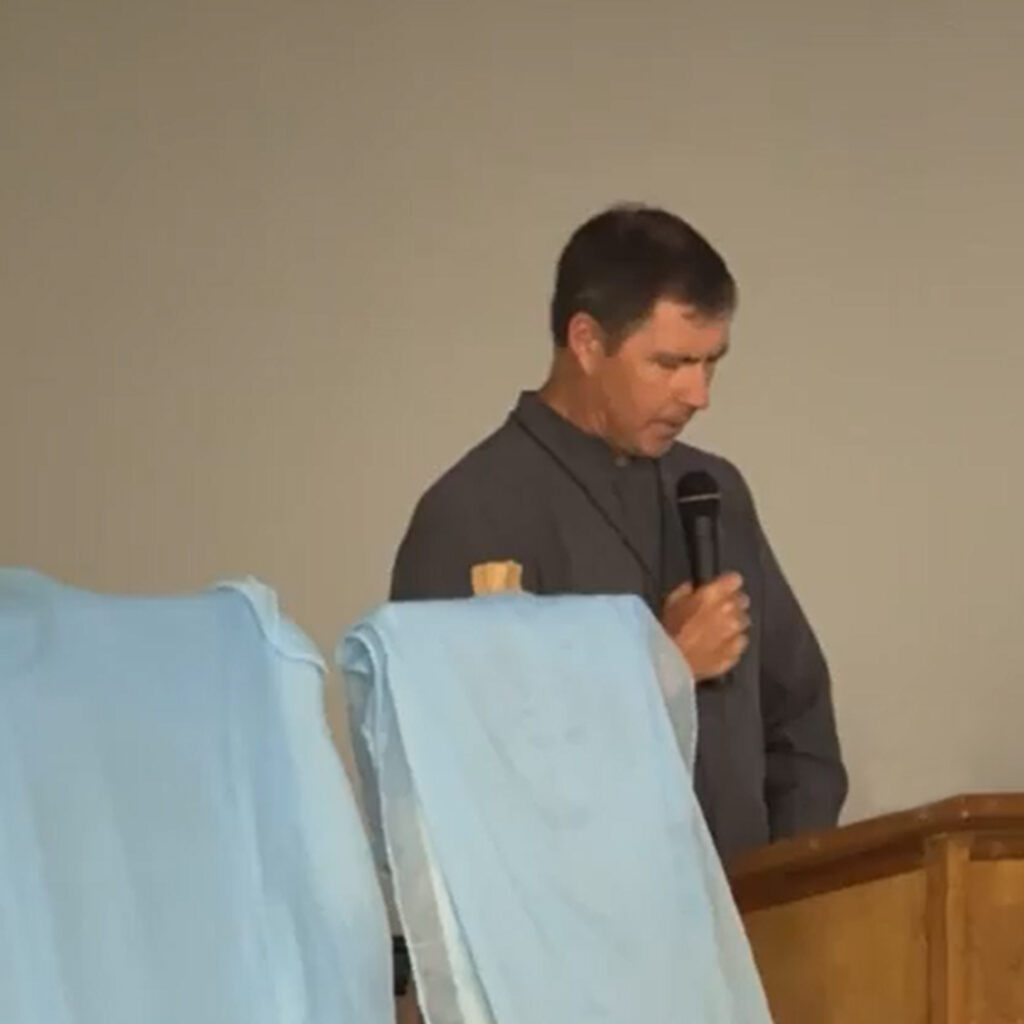
Here is a copy of Fr. Brady’s introduction speech and prayer:
“Merci McCoy’s Art Exhibition at OLCC
May 13, 2025
Good evening, and welcome to Our Lady of Corpus Christi. It is a joy and a grace to have you with us tonight, especially on this beautiful Feast of Our Lady of Fatima. On a day when the Church remembers Mary’s call to prayer, penance, and peace, we gather for something deeply fitting: an encounter with beauty that calls us inward and upward. An encounter with sacred art.
Tonight, we are privileged to host “Come and See”, a traveling art exhibit by the remarkable liturgical painter Merci F. McCoy. And I say “remarkable” not in the casual sense—but in the sense that one cannot help but remark upon her work. It stays with you. It speaks beyond what is visible. It pierces through the noise.
Merci is part of a growing but rare movement of artists working within the tradition of Classical Realism—a style born of the Renaissance and Baroque periods, rooted in truthfulness to the human form, in mastery of light and shadow, and in a deep sensitivity to the sacred. It is a tradition that calls to mind the luminous intimacy of Fra Angelico, the emotional realism of Rembrandt, and the spiritual gravity of El Greco. And like those masters before her, Merci doesn’t simply paint scenes—she paints mysteries. Mysteries of faith.
Born in the Philippines and now living in the United States, Merci McCoy brings to her work not only classical training, but a rich spirituality. Her paintings emerge not merely from technical skill but from contemplation. She describes herself as “one of God’s paintbrushes,” and it shows. Her studio is often filled with sacred music, prayer, and devotion. Each canvas is approached with the reverence of a sanctuary. And what she offers us is not just an image, but a moment of grace—a window into eternity.
This is what I want to emphasize tonight: that what we are about to experience is not an ordinary exhibit. It is not a gallery in the secular sense. It is, in a real way, a form of visual lectio divina—a meditative encounter with God through image.
The title of this exhibit, “Come and See,” is drawn directly from Scripture. When the first disciples ask Jesus, “Rabbi, where are you staying?” He responds, not with an address, not with a list of reasons, but with an invitation: “Come and see.” That phrase contains within it the essence of the Christian journey—it is a summons to witness, to follow, to behold.
Merci’s exhibit echoes that Gospel call. These paintings are revealed in sequence, not all at once. The experience is progressive, immersive. Each image unfolds like a new chapter in a narrative of salvation. The design of the exhibit itself invites us to slow down, to breathe, to contemplate. It mirrors the way God reveals Himself—not all at once, but gently, layer by layer.
There’s something profoundly liturgical about this approach. In the Mass, we don’t rush through mysteries—we move through them in time and symbol, in word and sacrament. Similarly, this exhibit invites us to move through visual parables that awaken wonder and call us to worship.
Merci’s work often blends elements of realism with the theological language of iconography. Now, when we think of icons, we might imagine the stylized faces and gold backgrounds of Byzantine art. But in a broader and more theological sense, an icon is any image that draws the viewer into the presence of the invisible God.
And that is precisely what Merci’s art does.
Even though her style employs anatomical realism and classical technique, the function of her art remains iconographic. Her work isn’t meant to be merely admired—it’s meant to be prayed. Her compositions direct the gaze not only toward the subject, but through the subject—toward a mystery, a person, a presence. Like the great icons of the Eastern tradition, her paintings are meant to be venerated, not in a superstitious way, but in a way that leads us deeper into prayer.
Tonight, you will see faces that reflect divine light. You will see the Child Jesus in arms that radiate maternal tenderness. You will see saints whose eyes seem to follow you, not in a haunting way, but in a profoundly human and holy way. This is the mystery of sacred art—that it doesn’t merely tell us about God; it draws us to God.
And what better day to enter into this experience than on the Feast of Our Lady of Fatima? More than a century ago, Mary appeared in a field in Portugal to three children. She spoke of conversion, of prayer, of penance. She urged the world to return to her Son. Her message was simple, but not easy.
And tonight, we might ask ourselves: what would Our Lady say to us now?
Perhaps she would invite us, once again, to turn from distraction and look upon her Son. Perhaps she would say, “Come and see.” Come and see the one who knows your heart. Come and see the beauty that does not fade. Come and see the God who became visible—who took on a human face—so that we might never again walk in darkness.
Merci’s work participates in this Marian spirit. It is steeped in tenderness, in compassion, in hope. It portrays the sacred not as distant or untouchable, but as close—as intimate as a mother’s touch, as radiant as the Eucharist on the altar.
This evening, as we begin our journey through “Come and See,” I invite you to engage with this art not only with your eyes, but with your heart. Take your time. Let yourself be still. Let yourself be moved. Ask the Holy Spirit to show you what He wants you to see.
And if, by the end of the night, you find yourself more peaceful, more attentive, more open to God’s presence—then you will have encountered not only art, but grace.
Thank you again for being here tonight. Thank you to Merci McCoy for sharing her sacred gift with us. And thank you to all those at OLCC who helped bring this evening to life.
Before we proceed into the exhibit, let us pause to ask for God’s blessing. I invite you now to join me in prayer.
Opening Prayer
In the name of the Father, and of the Son, and of the Holy Spirit. Amen.
Heavenly Father,
You are the Creator of all beauty,
the Divine Artist who paints the skies,
who breathes life into dust,
and who made us in Your image to reflect Your glory.
We thank You for the gift of sacred art,
for the hands and heart of Your servant Merci,
and for the opportunity to behold these works tonight.
Lord Jesus,
You who said, “Come and see,”—
open our eyes this evening to Your presence.
May we not only see with our senses,
but perceive with the eyes of faith.
Holy Spirit,
move among us as we walk through these images.
Inspire contemplation, awaken awe, stir repentance,
and ignite a deeper love for Christ and His Church.
Through the intercession of Our Lady of Fatima,
may this night lead us closer to her Son.
May beauty lead us to truth,
and may truth set our hearts on fire.
We ask this in the name of Jesus, the Word made flesh,
who lives and reigns with You, Father,
in the unity of the Holy Spirit,
God forever and ever.
Amen.
In the name of the Father, and of the Son, and of the Holy Spirit. Amen.“
